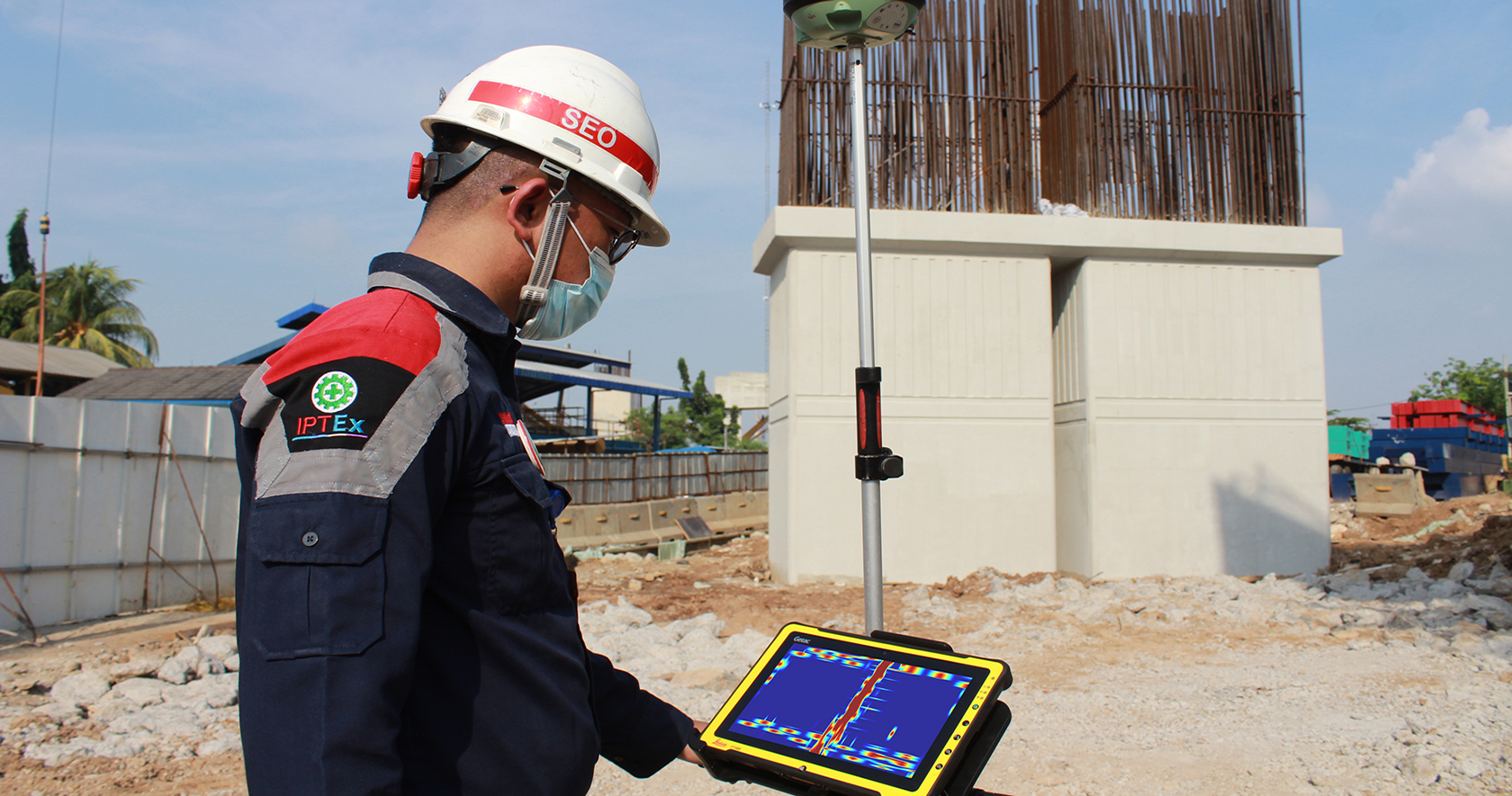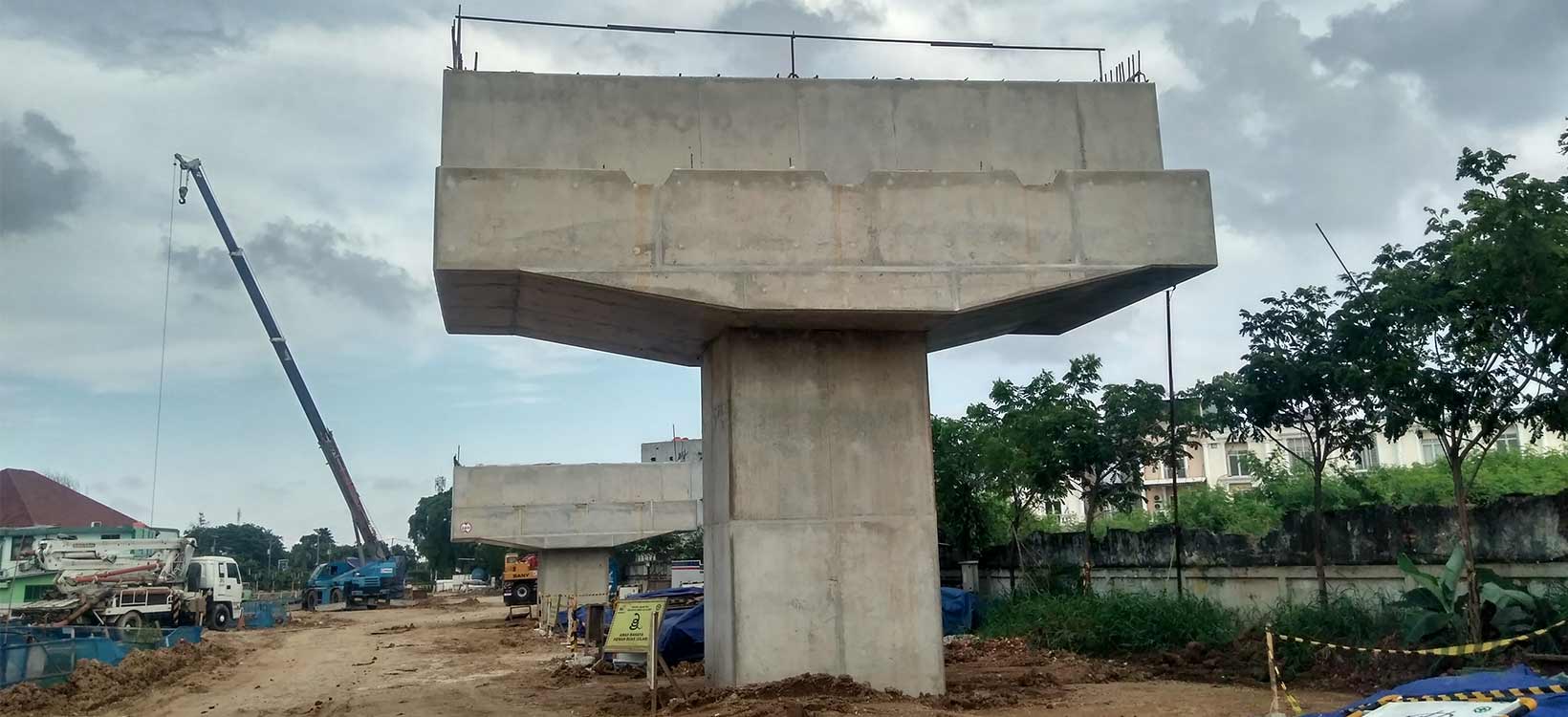An easy-to-use solution to prevent utility accidents
Case Study

Waskita Karya (Persero) Tbk is one of the leading state companies in Indonesia that plays a significant role in infrastructure development. Founded in 1961, Waskita Karya initially participated in water-related project work including reclamation, dredging, ports and irrigation. However, since 1973 the company has started to develop its business as a general contractor on a broader range of construction activities including roads, bridges, airports, waste processing plants, cement plants and other industrial facilities.
The company recently introduced the Leica DSX, utility detection solution, to reduce accident during excavation works and to mitigate money loss due to fines caused by utility strikes. By carrying out utility detection before earthwork jobs with the Leica DSX, Waskita Karya increased the speed, efficiency and safety of its on-site works.On-site utilities detection and documentation

The Bekasi-Cawang-Kampung Melayu Toll Road or shortly Becakayu is a motorway constructed over the Kalimalang River to decrease traffic congestion around Kalimalang. The construction of the motorway section was finished in 2018. Since then, Bekasi has started to grow rapidly and has now become an "escape" to citizens who can't afford to purchase their property in Jakarta. Besides, Bekasi has also become an important satellite city of Jakarta.
The data from BPS (Statistics Centre) from 2016, shows that there are around 359.531 commuters from Bekasi to Jakarta which increases traffic jams and makes, for example, a 15 kilometres distance take between 2-3 hours driving in peak hours. Therefore, the government initiated the construction of the Becakayu Elevated highway, which will connect Bekasi to Jakarta along 21,042 km with a total investment up to 7.2 billion IDR.
With Becakayu Elevated highway the same route will only take 30 minutes. This highway project has a vital role in accelerating traffic, as well as goods transportation and services distribution connecting the two major cities.
The challenge
Waskita Karya was contracted for the entire design and building of the infrastructure and the motorway. On this current project (Becakayu Phase 2A – edge), along with over 700 meters, the contracted team is passing through various terrain and asphalt conditions. The section consists of 48 pillars (foundation) with different dimensions, and those pillars are embedded from 5 m up to 10 m depth.
It is essential to ensure in the early process that the pillar's design is correct and safe to embed up to 5 or 10 m depth. Only after this step can the construction process start.
Typically, there are plenty of utilities buried underground, especially as the project site dominantly is in the inner city and some of the utilities are critical such as electric cables, oil and gas pipes. Those utilities are usually buried under 2 m depth; therefore, right after the predesign of the pillar's position, it's necessary to check the real situation on-site, before the construction begins.
The reason behind this is to avoid utility strikes when doing excavation work. If the on-site check is indicating that the planned pillar's position will jeopardise the utilities, the location of the pillar's need to be re-designed and sometimes, the dimension of the pillars themselves needs to be redone.
"Due to the short timeline of the project and a complex scope-of-work, we needed a solution which could enable us to detect buried utilities easily, but precise. Quickly means here is not only easy to use and operate but also easy to analyse and get the results. We needed a solution that allows us to know the accurate position of the utilities easily and quickly and could get the documentation immediately," explains Luki Danardi, Senior Vice-President for TREK Division.
The solution
The easiness to operate the Leica DSX and the visualisation in real time with the DXplore software, detecting buried utilities became much more straightforward, and anyone could do it without the need to having ground penetrating radar (GPR) background expertise. With little training, the staff was able to use without any issues.
Besides that, the software allows detecting buried utilities underground faster yet precise. Allowing also to export the data collected onto various file's format (CAD or BIM Software), which allowed the data to be used later on with other divisions or even send directly to the excavator's machine control system.
"Leica DSX is supporting us in detecting all types of buried utilities, such as water pipes (PDAM), fibre optic cables, and oil and gas pipe, with high resolution. Thus, we could avoid the risk of utility strikes during construction, saving us time and avoid additional costs to the project. To reduce utility strikes during excavation works and to mitigate the loss of money due to fines caused by the failure of works," explains Danardi.
The outcome

"We could detect buried utilities in our project so it could mitigate the accident during the construction and pay-fine due to the failure of excavation. Comparing with old methods we used; this equipment is helping us a lot, from time savings until cost savings and delivering accurate design for an infrastructure project," Danardi explains.
Besides the cost and time savings, the detection solution is easy-to-use, and the learning curve is very low. Due to the logical and user-friendly interface of the Leica DSX, Waskita Karya only needed one-day training, which was conducted by Leica Geosystems team.
"Start from that day; our internal team have been able to operate the GPR correctly. They could even teach their colleagues to use the system," concludes Danardi.





























